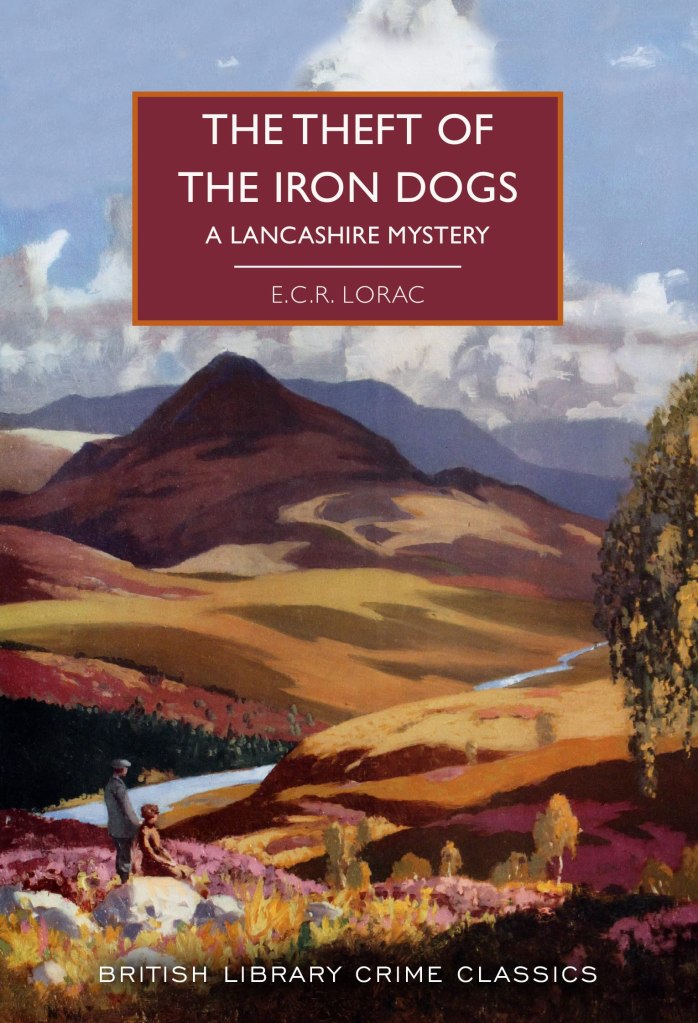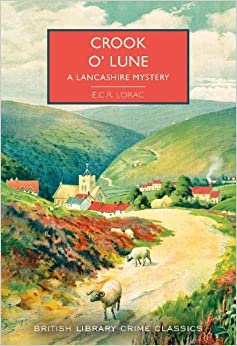The Theft of the Iron Dogs is another novel by E. C. R. Lorac that is set in the beautiful Lune valley of Lancashire, along with Fell Murder and Crook O’Lune. In order, it comes after Fell Murder and before Crook O’Lune.
Giles Hoggett has been busy with the harvest for weeks, but it is over, and he decides to walk over to check a cottage he owns next to the river. After he notices that someone has disarranged his woodpile, he goes into the cottage and finds someone has stolen an old coat, hat, and glasses as well as a bag, rope, and the iron firedogs out of the fireplace. In speaking with neighbors, he finds that another cottage owner has had his waders stolen.
Giles is inclined to blame small thefts on a tinker couple, referred to as potters in the North. No one has seen the potter’s wife, Sarah Gold, for some time, and it’s not lost on Giles and his brother George that the missing items could point to the disposal of a body. Hoggett knows that Chief Inspector Macdonald was in the area earlier investigating the fell murder, so he writes a letter to Macdonald expressing his concern.
Macdonald is investigating the theft of clothing coupons that he thinks might involve a criminal named Gordon Ginner, and he takes a weekend off after a trip up to Manchester on this case to check out the situation in the fells. While he is there, he finds a body hidden under tree roots in a deep pool of the river. It is Gordon Ginner.
I especially like these mysteries set in the fells, because they are so atmospheric. It is clear Lorac loved that area of the country. And incidentally, from this one I learned what a fell is. I just had a vague idea that it was a valley.
I received this book from the publisher in exchange for a free and fair review.






